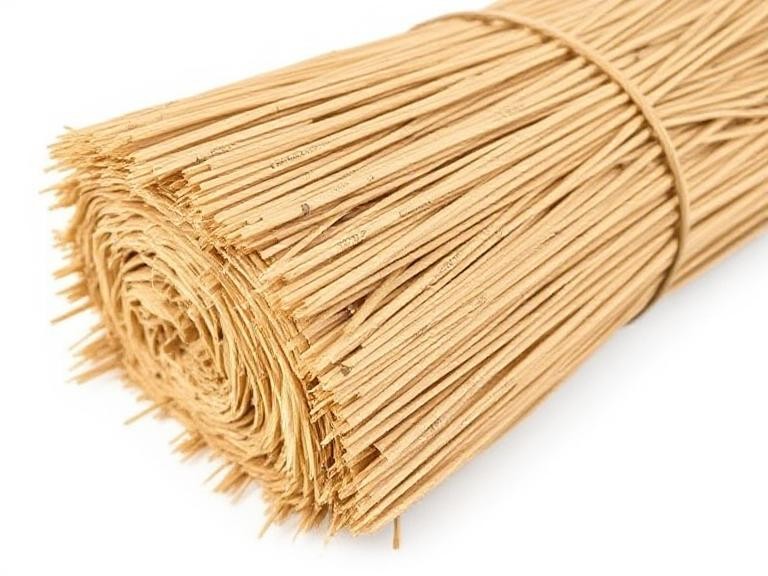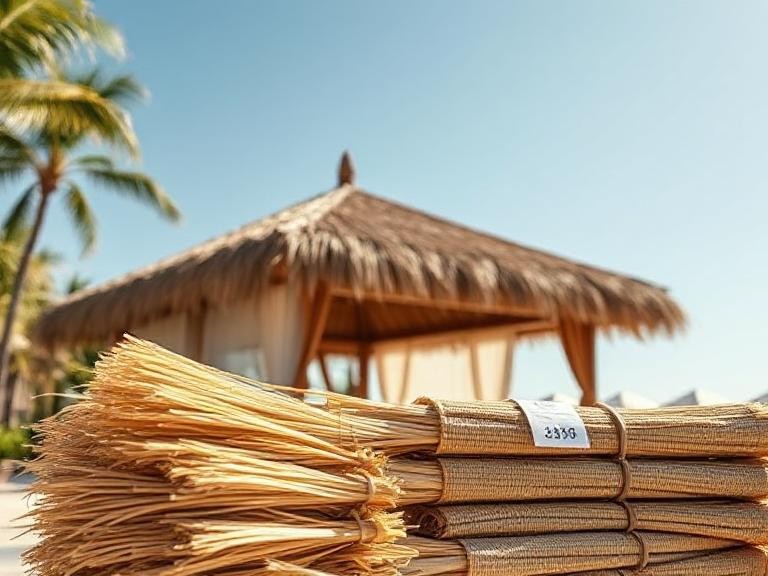
Tristan Ishtar
VP of Sales
Designing resorts and theme parks with tropical themes can be a bit tricky when you’re trying to figure out the right materials – a critical choice for the success of your project. Synthetic thatching is a popular option that can boost both the aesthetic appeal and functionality of the structures.
However, choosing the right supplier for this versatile material can be challenging. This article delves into how to choose a synthetic thatch supplier, focusing on factors like dependability, product quality, and sourcing. Understanding these aspects is vital for builders and designers who aim to create lasting, visually striking projects.
What Is Synthetic Thatch?
Synthetic thatch is an artificial roofing material designed to mimic the look of traditional thatch while offering enhanced durability and lower maintenance requirements. A modern alternative to traditional materials, synthetic thatch offers distinct advantages in theme park and resort projects:
- Material and Aesthetics: Made typically from high-grade HDPE (High Density Polyethylene), synthetic thatch closely mimics the look of natural thatch.
- Durability and Longevity: Synthetic thatch generally lasts much longer than natural thatch, often without fading or discoloring.
- Variety and Flexibility: Available in various colors and styles, it offers more creative flexibility in design.
These qualities make synthetic thatch an attractive option for contemporary construction projects, blending traditional aesthetics with modern durability.
Choosing a Synthetic Thatch Supplier
When selecting a synthetic thatch supplier, several factors are paramount, says Tristan Ishtar, vice president of sales at amaZulu.
Dependability and Experience
The supplier’s dependability is crucial. As Ishtar notes, experience in the field ensures that the supplier understands the nuances of synthetic thatch. A seasoned supplier can provide valuable insights into the product’s performance over time.
Product Quality and Standards
Assessing the quality of synthetic thatch is essential. Suppliers should provide products that meet international standards for wind rating and UV exposure. Ishtar warns against inferior products that may fade or bleach, emphasizing the importance of UV test reports and durability assessments.
Sourcing and Lead Times
Understanding where the synthetic thatch is sourced from is vital. Suppliers like amaZulu source from locations including Lake City, Florida, and Indonesia, offering different lead times and product characteristics. Proximity to the supplier can affect delivery times and overall project timelines.
All of these factors should be considered, Ishtar says.
“Dependability, experience, knowledge of the synthetic thatches – we’ve already screened them so the ones that we have are going to work – they’re not going to fade or discolor,” he says.
Evaluating Synthetic Thatch Product Quality and Performance
Quality and performance are critical in selecting synthetic thatch, particularly for high-profile projects.
- Synthetic thatch should be able to withstand various environmental conditions without losing its aesthetic appeal.
- Suppliers should guarantee their products against fading, discoloration, and structural wear, ensuring that the thatch maintains its appearance and integrity for years.
- The ability of synthetic thatch to endure intense sunlight exposure, as well as harsh weather conditions, without significant degradation is a crucial factor in its selection. Ishtar’s emphasis on rigorous testing and standards highlights this need.
You have to be careful about the suppliers you deal with, Ishtar notes, or you could end up getting a raw deal.
“There are a lot of synthetic thatch manufacturers popping up in the last five to eight years – tons are coming out of China,” he says. “Most of them, if I say, ‘send me your UV test report, the Chinese ones are 200 to 400 hours and even within that, you see that the color has changed.”
Considerations for Specific Project Needs
It’s not just the quality of the product itself – architects and builders also need to understand the logistics for their specific projects.
- Sourcing Based on Location and Lead Times: Ishtar highlights sourcing variability, with suppliers in Florida offering shorter lead times. Projects in proximity to suppliers can benefit from quicker deliveries, crucial for meeting tight deadlines.
- Product Selection for Specific Applications: Different applications may require unique types of synthetic thatch. For example, certain suppliers provide thicker, synthetic fence panels ideal for umbrella applications, which may not be available from all suppliers.
- Aesthetic Variability: Different suppliers offer synthetic thatch with varying aesthetics. The choice can significantly influence a project’s overall appearance. Designers should consider the color, texture, and style variations available to ensure the thatch complements the thematic elements of the project.
Talk to the Experts About Your Synthetic Thatch Needs
The selection of a synthetic thatch supplier is a decision that weighs heavily on the project’s success. This choice is about finding a balance between aesthetics, functionality, durability, and the specific needs of the project.
For project managers, architects, and designers, thoroughly evaluating these elements is essential to ensure that the final construction not only looks spectacular but also stands the test of time.
Contact the professionals at amaZulu. We specialize in synthetic thatch roofing and will help you discover the range of options available so you can tailor the perfect solution for your project. Let synthetic thatch be the material that not only builds your structures but also elevates the overall experience of your visitors.

Tristan Ishtar
VP of Sales
With over 11 years at amaZulu, Tristan brings deep expertise in tropical building materials and a customer-focused approach. He serves as a trusted consultant for architects and designers, providing expert guidance without high-pressure sales.





